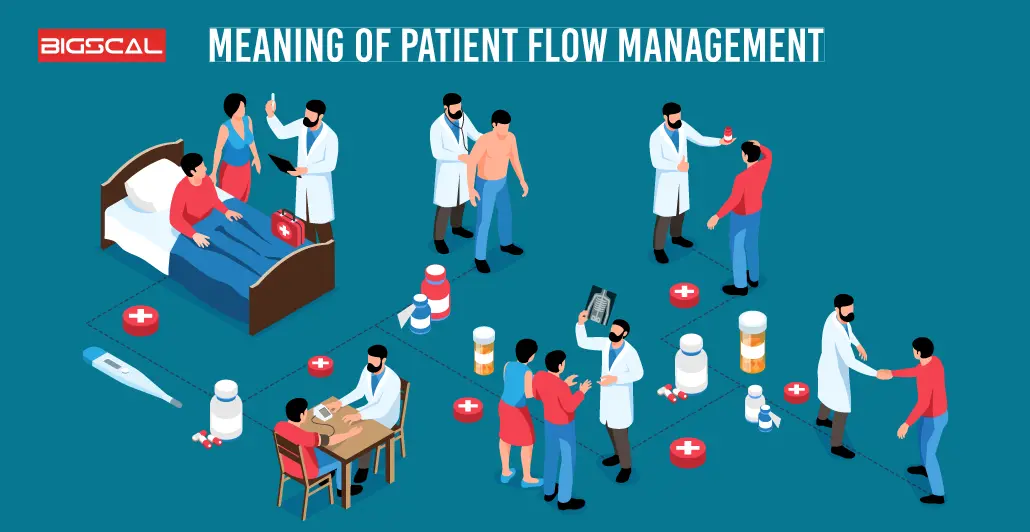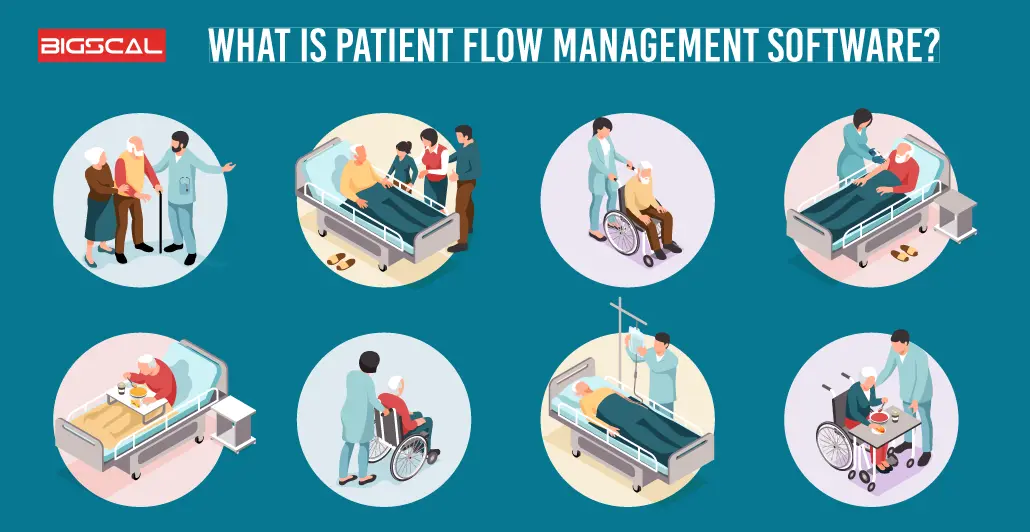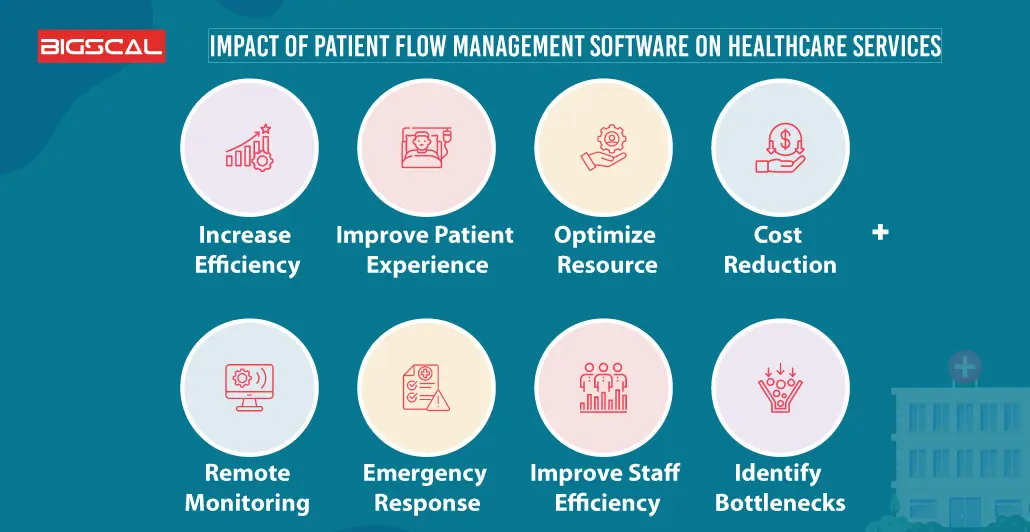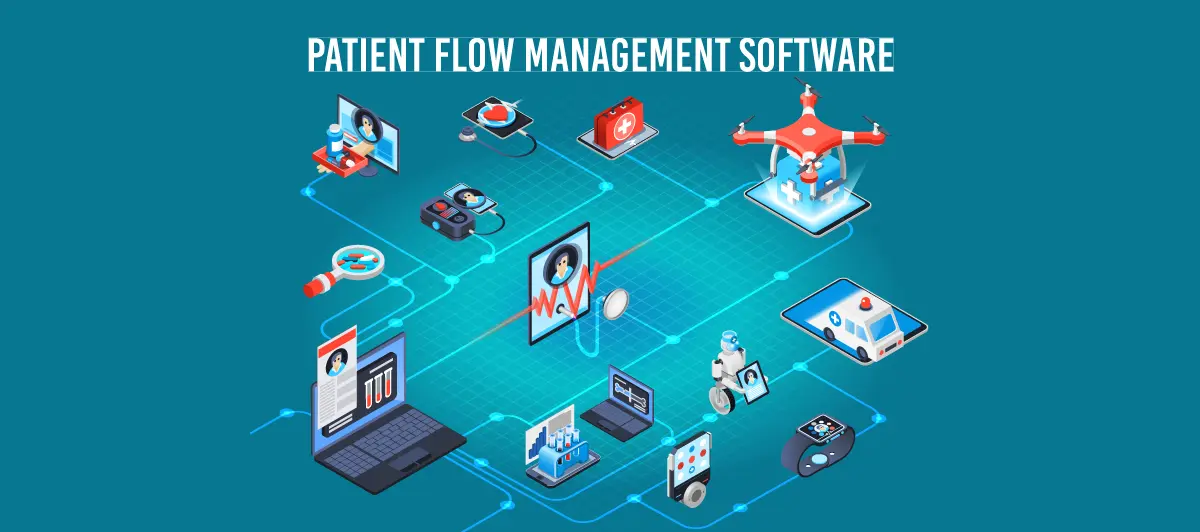Patient Flow Management Software: Its Impact On HealthCare Efficiency
Quick Summary: : Just like other tools or technology impacting healthcare, Patient Flow Management Software is no exception. It impacts and transforms healthcare in many ways. So, let’s check PFMS is, and in what ways it is impacting healthcare efficiency…
Introduction
In the healthcare sector, efficiency and patient throughput is equally important as patient care. Patient Flow Management Software is an immersive tool; it provides efficiency along patient throughput with effective healthcare services.
It guides patients in their journey, From their first visit to their discharge. Additionally, It helps doctors to make better decisions and maintain and manage patient flow efficiently. Furthermore, it optimizes resource utilization and allocation and reduces waiting times, which advantages both doctors and their patients.
The efficiency does not end here; it has many benefits, and it impacts healthcare in many ways. That’s what we will discuss in this article. From meaning to impact, we will cover all about patient flow management system solutions or software.
So, keep reading!
Meaning Of Patient Flow and Patient Flow Management

Patient Flow means a patient’s movement towards every stage of their healthcare journey. The Patient journey starts from their initial contact with hospitals and ends with their discharge or complete treatment.
Now, What is Patient Flow and Patient Flow Management… So, it is a process of optimizing and coordinating patient flow throughout various stages. You can also call it a patient flow process. It ensures efficient and timely care for the patient. In addition, it involves strategies and techniques to minimize or reduce wait times and, improve the overall patient experience within the hospital and help to get better patient outcomes. This patient flow process includes resource allocation and utilization, scheduling, medications, and treatment process.
What Is Patient Flow Management Software?

Patient flow management system software is a type of patient management software. It is a tool that manages patient flow. . Patient flow management solution software optimizes the movement of the patient within the hospital. Additionally, it helps hospitals and clinics to manage and coordinate various aspects of patient care, from initial registration to discharge.
Just like having patient queue management software, it offers a range of functionalities, including appointment scheduling, real-time patient tracking, of patient progress, bed management, and resource allocation. Additionally, by providing a centralized communication platform for healthcare staff to monitor and manage patient flow, this software enhances efficiency, reduces waiting times, and improves the overall patient experience.
It also enables data-driven decision-making to improve patients well. It helps healthcare providers allocate resources effectively and ensure that patients receive timely and appropriate care. At last, patient flow management software is the key tool in raising the operational efficiency of healthcare institutions and in this way, the quality of the patient care is improved.
Read more: How Patient Relationship Management Software Helping The Healthcare Sector
Impact Of Patient Flow Management Software On Healthcare Services
The patient flow software solutions impact on healthcare in various ways you may see below:

Increase Efficiency
The flow management of patients software makes the healthcare services more efficient. It does so by simplifying many of the patient care parts. To illustrate, it allows hospitals and clinics to easily plan appointments and use resources thereby, cutting off long queues. It also promotes the recording of patient records and medical history, hence it is easier for health care providers to get the medical records and history of the patient quickly.
Besides, the software can help to execute the administrative tasks such as registration and billing in operating rooms, thus, the staff can be focused on patient care. It is also a factor in the reduction of the overbooking of operating rooms and therefore, allows the medical staff to give the required attention to each patient without any hassle.
Improve Patient Experience And Patient Satisfaction
A patient flow management system is helpful for the patient experience improvement and the patient satisfaction increase. The elimination of the lengthy waiting and the smooth appointment scheduling allows the patients to have less wait times and less frustration and anxiety. They are less likely to be in waitings areas, thus they are more likely to have a better and relaxing healthcare visit.
Besides, the software also allows the doctors to send the patients the reminders of the appointments and the patients can check in online, thereby reducing the time the patients have to spend on the office. It likewise enables the staff to easily interact with patients, hence, the questions and concerns of patients are being answered instantly.
Optimize Resource
Hospital patient flow software has a great impact on healthcare by enhancing the resource management within hospitals. It aids hospitals and clinics in the more effective allocation of their resources. Thus, by following patient movements, making appointments, and managing the staff work, this software guarantees that the right resources are available when and where they are needed.
This thus avoids the load of a single department being excessively heavy while at the same time, underutilizing the other departments in other departments. It is the outcome of a job distribution among the healthcare workers that is well-balanced. To sum up, it is all about the efficient use of the scarce beds, equipment and personnel. Hence, the end result is the improvement of patient care and the slimning of the waiting times.
Cost Reduction
Patient flow management system solutions cut down the costs and the expenses of the health care services. The process of simplification and elimination of inefficiencies leads to the reduction of costs that are not essential. For example, it is the factor that reduces the direct costs to the employer by the way of staff schedule optimization and at the same time it is the factor that ensures that the patients are properly cared for without the long hospital stays.
Besides, it also cuts the patient wait times and improves the efficiency of the healthcare system, thus, it is the best way to avoid legal claims or penalties that may hurt the healthcare providers financially. Thus, the software is the one that reduces the operational costs, and at the same time it increases the revenue generation by increasing the patient throughput to decrease the waiting time and thus the patient experience is improved.
Real-Time Tracking and Remote Monitoring
Flow of patients is enhanced by the application of patient tracking in the real time and Remote monitoring. It is a way for the healthcare providers to watch the patients’ status and movements all the time. Through this device, the physicians and nurses have the ability to get the real time data about the vital signs, the test results, and the location of the patient in the hospital. Thus, the patients are given prompt attention and improved health care is provided.
To illustrate, in the case of a patient’s condition getting worse, the software can instantly inform family members and medical staff. Remote monitoring is particularly necessary for people with long-lasting diseases who can be monitored from their houses, thus, the possibility of hospital visits is reduced.
Emergency Response
Patient flow technology is immensely helpful in the emergency response in healthcare settings by the direct access to the emergency department. In the case of emergencies or sudden critical situations, time becomes the most important asset. This software makes it possible for the medical teams to communicate quickly and coordinate their activities.
Besides, it improves the efficiency by being on the alert of the emergency situation instantly, phone calls and notifications. When a trauma case arrives at the hospital the software can set off alerts to the phone calls of the trauma team or the emergency department, thus, saving the life of the patient. Thus, the process becomes faster in diagnosing, treating and sometimes even in saving the person’s life. Besides, it is the way to get the highest level of treatment.
Improve Staff Productivity and Staff Efficiency
Patient flow management software is a controller for healthcare facilities just as if it is a remote for a car. It assists healthcare staff in handling their tasks better. It enhances the performance and efficiency of the staff as they can easily track the patients. Moreover, it is like a map for doctors and nurses. It is like a compass that guides them to the right direction and time. The absence of time spent in looking for patients or information therefore saves on time.
By the software, they can concentrate on patient care more. Staff can also talk to each other, family members, and other departments easily, hence, the possibility of errors is very small. To sum up, in general, it’s like cutting the work process, thus the work process becomes smoother and faster.
Identify bottlenecks
Bottlenecks are just like a traffic jam in a hospital except in a hospital if it was a complete crash then somebody would die. These are areas where patients get stuck and it is the things that get slower down. Patient flow software is useful to detect the reasons of slow patient flow. Besides, it aids healthcare providers in determining the problems they are facing and solving them.
To illustrate this, if there’s always a long line at the registration desk, the software will make this problem evident. After pinpointing the bottlenecks, the hospital can start to take the measures to cut the waiting times and thus make the patient’s journey more smooth.
Read more: Patient Journey Management Software: Why Hospitals Need It
Searching For A Company To Develop Patient Flow Management Solution? Try Bigscal Technologies!
Every hospital requires efficiency, and Patient Flow Management software is the most suitable choice to improve efficiency in the hospital. The company we are in is a special t pe in the software that is for the patient flow management in the healthcare sector.
We are professionals in designing and putting to use the software that assists hospitals and clinics. As well, we offer the services that are tailored to the individual needs. Hence, why not, have a PFMS which can be made according to your needs!
Conclusion
That’s how PFMS and its effect on the hospitals’ efficiency through the simplification of many healthcare activities are done. It causes the improvement of patient experience and more appropriate distribution of the resources. Besides, with the current technological progress, patient flow management software will always remain to be a crucial tool to obtain more efficient results. By this point, we think that you have got a clear idea of this tool and we hope you are now able to understand everything about it. Both the patient and the doctor are the ones to get the benefit from it. Besides, it is a significant influence on the whole healthcare system.
FAQ
What is a patient flow management system?
A patient flow management system is a technology that assists in the optimization of patient flow in their healthcare experience. Thus, the whole is the result of efficient patient experience and the steady flow of patients.
Which system is used to monitor patient flow?
Hospitals apply different software solutions for the patient slow monitoring. These systems, HIS, EHR and a patient flow management software, are the ones that are involved.
How do you create a patient flow?
Creating an efficient patient flow involves several steps:
- Creating an efficient patient flow involves several steps:Creating an efficient patient flow involves several steps.
- Appointment Scheduling: Scheduling software is suggested to manage appointments and to organize the resources.
- Registration: Make the check-in process easier and more efficient in order to cut down on the time spent waiting.
- Care Pathways: Patient care paths are to be defined for the purpose of, to guide the treatment and to reduce the delays.
- Real-time Monitoring: Write a program that monitors the progress of patients and thereby adjust the resources.
- Communication: Authorize the use of the means of communication between the staff and the patients.
What software system do most hospitals use?
Most of the hospitals have electronic health record (EHR) systems, like epic, Cerner and Allscripts. They are helpful for writing patient data, treatment plans and making sure that the care provided within hospitals is continuous.
How do you optimize patient flow?
Optimizing patient flow involves several strategies:
- Efficient Scheduling: Enforce a proper appointment procedure.
- Triage: The redundant procedures that are there to ensure that pupils identify correctly are done away with and that makes it the quickest way of identifying the pupils giving the accurate results to the school.
- Care Pathways: Set up distinct care plans that will be the main guide for patient.
- Resource Allocation: Keep track of the patient’s improvement and the use of the resources in a way that is most useful for the patients.
- Communication: The staff-patient communication should be improved so that the patient’s needs can be met and the delays can be avoided.





